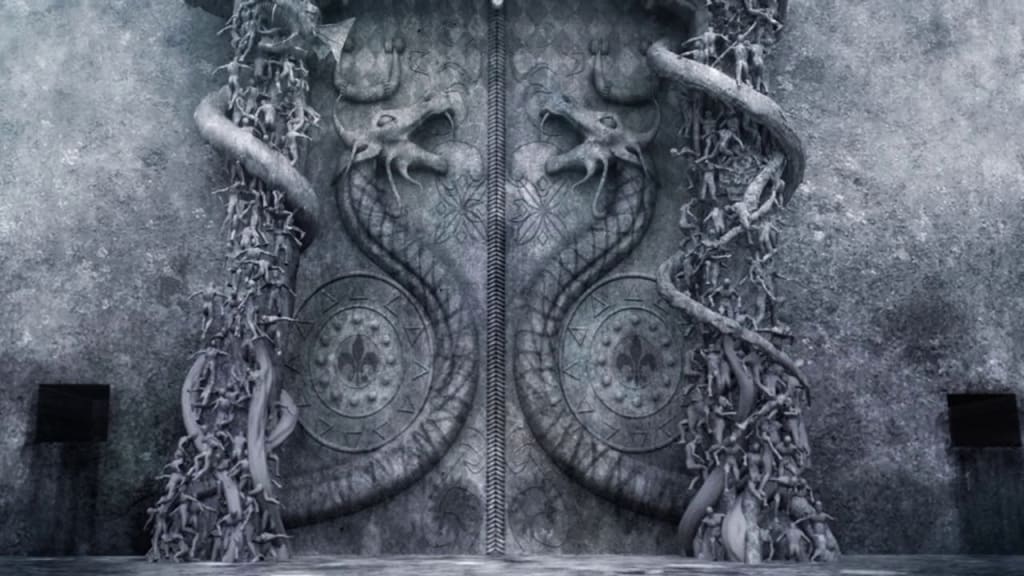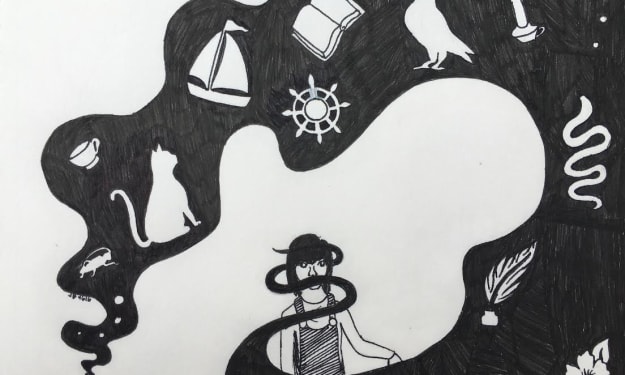The Mysterious SEALED Temple Door NO ONE Can Open
Last Door of Padmanabhaswamy

It is naive to assume that there aren't items that those individuals left behind on a planet that has existed for thousands of years and seen numerous people come and go.
What about the ancient knowledge that has been lost to the passage of time? Our predecessors handed down as much knowledge as they could to the following generation.
Is it our responsibility as contemporary world citizens to learn such secrets?
Or was there a reason why they ended up buried beneath the sands of time?
The Sri Padmanabhaswamy Temple may be one of those long-lost secrets.
This temple is as old as Hinduism, which is practised there.
This temple is said to be the richest temple in the entire globe and is situated in Kerala, India.
The status is immediately apparent upon first glance because the entire construction is wrapped in genuine gold.
Beautifully constructed, this ancient temple is an outstanding example of the fusion of Keralan and Dravidian architectural styles, which are common among Hindu temples, particularly in the state of Kerala.
The Padmanabhaswamy Temple stands out from the others, nevertheless, for some reason.
It's not the golden exterior, but rather something quite different and eerier.
It is said that underneath this ancient Hindu temple may be one of the greatest treasure known to man.
The Sri Padmanabhaswamy temple’s history goes back to 500 B.C. and 300 A.D.
when it was mentioned in several texts during India’s Sangam Period of literature.
Essentially, like any temple it serves as place of worship for a certain deity and specifically for the Padmanabhaswamy temple, its primary deity is Vishnu which is represented by the titular Sri Padmanabha.
It’s one of the 108 Vaishnavite shrines that exist and entrance to it is only granted to Hindus.
There is no exact date as to when this temple was built but one thing is for sure, it’s been there for a long time and it will stay there long after most of us are gone.
It is because of this rich but lost history that the Indiana Jones within all of us put the Padmanabhaswamy temple’s mysterious existence out from under the depths of dead Hindu knowledge and into the 21st century.
With an order of the Indian Supreme Court in 2011, the six known vaults underneath the temple were explored and what was found inside them shook the entire world.
The vaults that were opened held unimaginable treasure, further cementing the temple’s.
They contained precious stones and metals, ancient artifacts, but most of all, gold.
Gold coins dated around 200 B.C., golden necklaces and crowns, and even a solid gold statue of the deity of the temple, Padmanabha.
All of the treasure found was estimated to be worth billions of dollars.
This was said to be one of the biggest treasure finds in all of history and that’s not even the most exciting part, out of the six vaults of the temple, only five were completely opened.
The last vault, named Vault B by the Indian Supreme court, contains a door that leads to another chamber.
The door, like the temple, is beautifully adorned, if not a little scary.
Carved on the door, are two giant cobras, said to be warnings to anyone who wants open it and reveal the secrets inside.
There are no latches or bolts, not even a keyhole, no other means of entry except for a ritual performed by a “sadhus” or Hindu monk who must be powerful enough to perform the “Garuda Mantra” or chant.
There is currently no known person capable of such.
That’s why this inner sanctum has been sealed for centuries and no one knows exactly what’s inside.
Much information about the temple and its vaults is lost on the temple officials, even for the Travancore royal family whose trust the temple is under.
However, if the substantial amount of wealth from the other vaults is of any indication, then, it would be reasonable to think that this vault too will bring treasure with it…and maybe more, if the cobras’ warning on the door of the inner vault had any truth to them.
The fear that the warning has garnered maybe one of the reasons why the vaults of this temple has remained untouched by time but the 2011 Supreme Court order didn’t just come from pure curiosity of would-be treasure hunters and archeologists but also something less mysterious and more practical.
In 2007, a lawsuit that accused the Travancore family of temple mismanagement and using the temple’s wealth for their own was filed by Ananda Padmanabhan, a lawyer from Trivandrum, Kerala.
Padmanabhan, a man passionate in history, was knowledgeable of the history of the temple.
Since its establishment, royals of India would lavish riches upon riches in honor of the deity of the temple.
Ceremonies would even be held wherein maharajas would donate in gold the weight of the princes who were approaching adulthood.
He believed that the treasures were still inside the temple and he feared it might be misused by the royal family.
With his lawsuit, the Indian government ordered an inventory on the temple treasures.
However, it seems that this isn't the first time the Indian government has tried to explore the temple.
According to a travel guide of Travancore, an ancient Indian kingdom that is now part of modern day Kerala, written by a notable British author, the 2011 discovery was not the first, though it was the one that discovered the most treasure.
In 1908, there was a failed attempt to open the vaults because the explorers quickly left when they found the chambers infested with cobras.
However, in 1931, when the state of Kerala was financially in need, another attempt was made to breach the vaults, and this time it was successful, with at least one of the vaults opened and ample treasure found.
As for the other vaults, it would be 80 years until their treasures would be found but not Vault B which has remained closed and continues to be to the outside world.
Currently, the government of India is still trying to open the sealed door inside Vault B.
The Travancore royal family, along with many religious devotees, have appealed the government’s order for another exploration of the remaining vault.
A ritual called Devaprasnam was held to know the deity’s wish on the fate of the temple and its treasures.
In the ritual, a young boy who would serve as the instrument through which the deity would interact and convey his wishes.
After the Devaprasnam, the deity was apparently not pleased, wishing the treasures not to be disturbed and the last vault not to be opened or else.
According to the astrologers who performed the ritual, the opening of the inner chamber will cause untold catastrophic events of apocalyptic proportions.
A legal battle is still being waged in the courts of India.
There are many opinions on what to do with the treasure found.
Some say it should be used to benefit the people of Trivandrum, the city in Kerala where the temple resides, but religious devotees would say otherwise.
For them it is not right that the government dip their hands in the temple coffers for similar incidents of the government trying to inventory the wealth of Christian churches in the state was stopped because of severe opposition.
So why should it not be the same for Padmanabhaswamy?
Another thing is, since the treasure was given to the deity, it must remain with the deity.
In India, deities can actually own property, however they are considered minors and must have “adults” who will oversee it.
It is for this reason that the Travancore family reasserts their rightful duty to oversee the temple and its treasure.
For now, the fate of the Sri Padmanabhaswamy temple remains up in the air.
The deity of the temple himself has given his sentiments but in this modern day and age and in a country that is in need of finances to remedy their economic problems, what weight do these legends and warnings have?
Will practicality win over religion and superstition?
Whatever decision will be made, it will have to be the right one because the whole world is watching and maybe, just maybe, even Vishnu himself, and no one, certainly not for the people of Kerala, wants an apocalypse on their hands.
About the Creator
Durga Prasad
My "spare" time is spent creating for myself and writing for others.





Comments
There are no comments for this story
Be the first to respond and start the conversation.